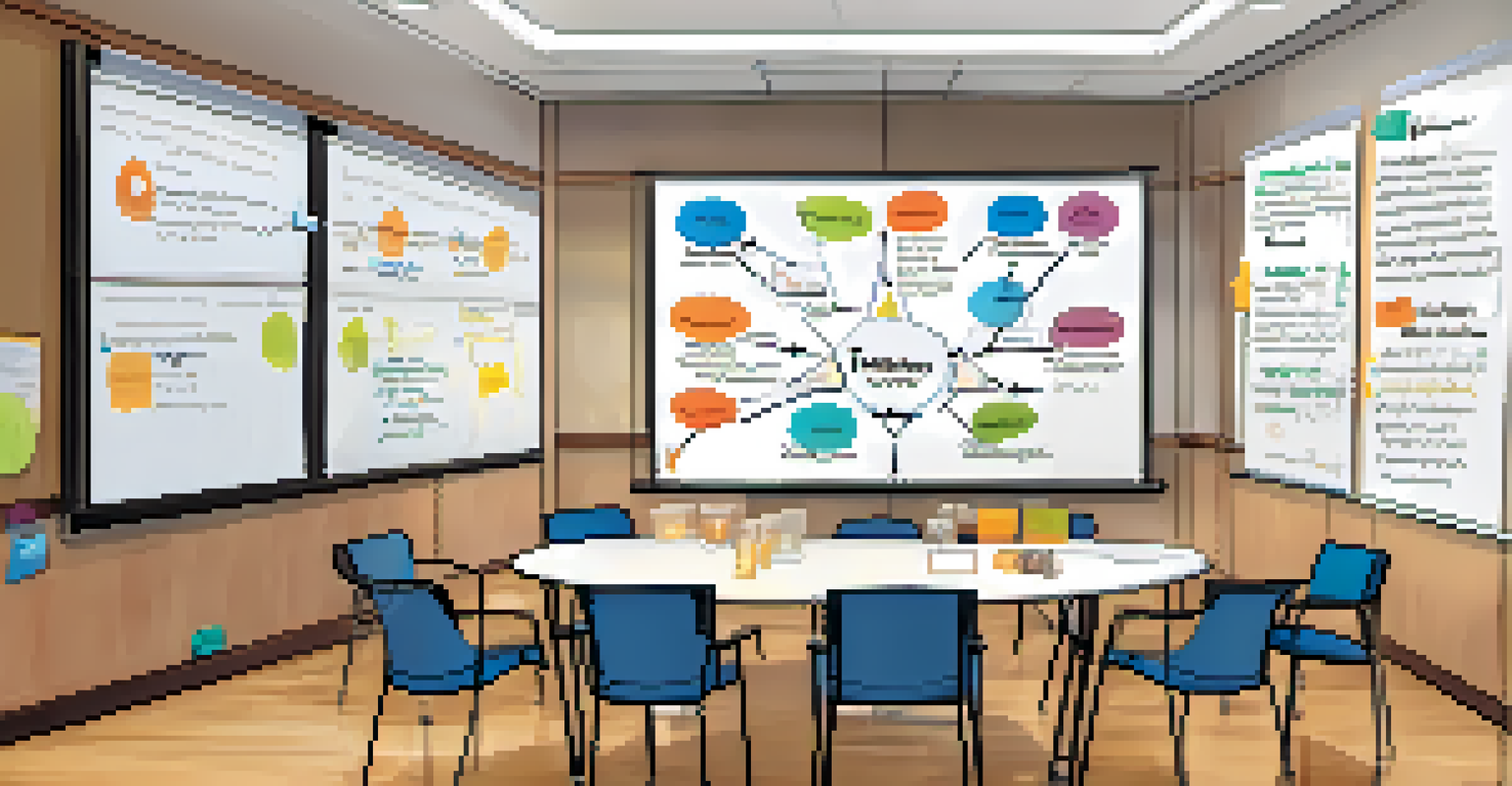Behavioral Interview Questions and How to Tackle Them

Understanding Behavioral Interview Questions
Behavioral interview questions are designed to assess how you've handled situations in the past. The premise is simple: your past behavior can be a strong predictor of future performance. This approach allows interviewers to gain insights into your problem-solving skills, teamwork, and adaptability. By focusing on specific examples, these questions provide a more dynamic view of your capabilities than traditional questions.
The past cannot be changed. The future is yet in your power.
Common examples include inquiries like, 'Tell me about a time you faced a conflict at work.' Such questions require you to reflect on your experiences and articulate them clearly. This format not only tests your communication skills but also your ability to analyze and learn from past situations. Understanding this format is crucial for preparing effectively.
Recognizing the importance of these questions can help you shift your mindset from anxiety to opportunity. Instead of viewing them as challenges, see them as chances to showcase your unique experiences. With the right preparation, you can turn these questions into powerful narratives that highlight your strengths.
The STAR Method: Your Answering Framework
One of the most effective ways to approach behavioral questions is by using the STAR method. STAR stands for Situation, Task, Action, and Result, providing a structured way to present your experiences. By breaking down your answers into these four components, you can create a compelling narrative that is both clear and concise. This method not only makes your response easier to follow but also ensures you cover all necessary details.

For example, if asked about a challenging project, start by describing the Situation and the Task at hand. Then, move on to the Actions you took to address the challenge, and finally, conclude with the Result of your efforts. This format helps interviewers understand not just what you did, but how you think and what you learned along the way. It’s a great way to demonstrate your problem-solving skills.
Master Behavioral Questions
Behavioral interview questions assess past experiences to predict future performance, making it vital to prepare specific examples.
Practicing this method can significantly boost your confidence during interviews. By rehearsing your answers using STAR, you can anticipate questions and formulate responses that resonate. Remember, the goal is to tell a story that captivates the interviewer while showcasing your qualifications.
Preparing Your Stories in Advance
Preparation is key when it comes to behavioral interviews. Reflect on your previous experiences and identify a variety of situations that demonstrate your skills and strengths. Think about challenges you've faced, successes you've achieved, and times when you've worked well in a team. Having a bank of stories at your disposal can make it easier to respond to unexpected questions during the interview.
Success is the sum of small efforts, repeated day in and day out.
While preparing, aim for diversity in your examples. Use situations from different aspects of your life—whether from previous jobs, volunteer experiences, or academic settings. This variety not only showcases your adaptability but also gives you multiple angles to approach different questions. The more prepared you are, the less likely you are to be caught off guard.
As you prepare, consider writing down your stories using the STAR format. This practice can help solidify your thoughts and make recalling them easier during the interview. With well-prepared stories, you’ll feel more in control and ready to impress.
Common Behavioral Interview Questions to Expect
While the specific questions can vary greatly by industry and role, certain behavioral questions tend to pop up frequently. Some common ones include, 'Describe a time when you had to work under pressure,' or 'Can you tell me about a time you failed?' These questions are designed to uncover how you handle various situations, so being familiar with them can help you prepare effectively.
Another popular question is, 'Give me an example of a time you demonstrated leadership.' This question not only gauges your leadership abilities but also your capacity to inspire and manage others. By practicing your responses to these common questions, you can ensure that you’re ready to shine when they come up in your interview.
Use the STAR Method
The STAR method—Situation, Task, Action, Result—provides a structured approach to effectively communicate your experiences.
Moreover, don’t hesitate to ask questions back to the interviewer. This can create a more engaging conversation and give you additional context for your answers. By understanding what they value, you can tailor your responses to better align with their expectations.
Body Language and Communication Skills Matter
While the content of your answers is crucial, how you deliver them is equally important. Non-verbal cues, such as maintaining eye contact and using open body language, can enhance your communication. This shows confidence and engagement, which can leave a lasting impression on your interviewer. Remember, interviews are as much about connection as they are about content.
Additionally, practice active listening during the interview. This means not only hearing the questions but also understanding what the interviewer is really asking. By being fully present in the moment, you can provide more relevant answers and even ask clarifying questions if needed. This two-way communication can enhance rapport and demonstrate your interpersonal skills.
Ultimately, a confident demeanor combined with clear communication can set you apart from other candidates. By working on your body language and listening skills, you can create a more positive interview experience for both you and the interviewer.
Handling Difficult Questions Gracefully
Sometimes, you may encounter questions that feel particularly challenging or uncomfortable. For instance, you might be asked about a significant failure or a conflict with a supervisor. While these questions can be tough, they also offer you an opportunity to demonstrate your growth and resilience. Approach them with honesty and a focus on what you learned.
When addressing difficult questions, use the STAR method to provide structure. Focus on the Situation and Task to set the stage, then explain the Actions you took, and conclude with the Result, emphasizing your growth. This not only shows maturity but also your ability to learn from experiences, turning negatives into positives.
Follow Up After Interviews
A thoughtful follow-up email can reinforce your interest and keep you top-of-mind for the interviewer after the interview.
Remember, it’s okay to take a moment to gather your thoughts before responding. A brief pause can help you articulate your answer more effectively. By handling tough questions with poise, you can turn potential pitfalls into showcases of your problem-solving abilities.
Following Up After the Interview
After your interview, don’t underestimate the power of a follow-up email. This is an opportunity to thank the interviewer for their time and reiterate your interest in the position. A thoughtful follow-up can help keep you top-of-mind and reinforce a positive impression. It also serves as a chance to address any points you might have felt needed clarification during the interview.
In your follow-up, you might reference specific topics discussed during the interview, particularly those related to your behavioral responses. For example, if you shared a story about teamwork, you could express excitement about how your collaboration skills align with the company’s values. This personal touch shows that you were engaged and are genuinely interested in the role.

Lastly, be patient. The hiring process can take time, and it’s important to respect that timeline. Following up appropriately can maintain your connection, but also give the decision-makers the space they need. Your professionalism during this stage can further solidify your candidacy.